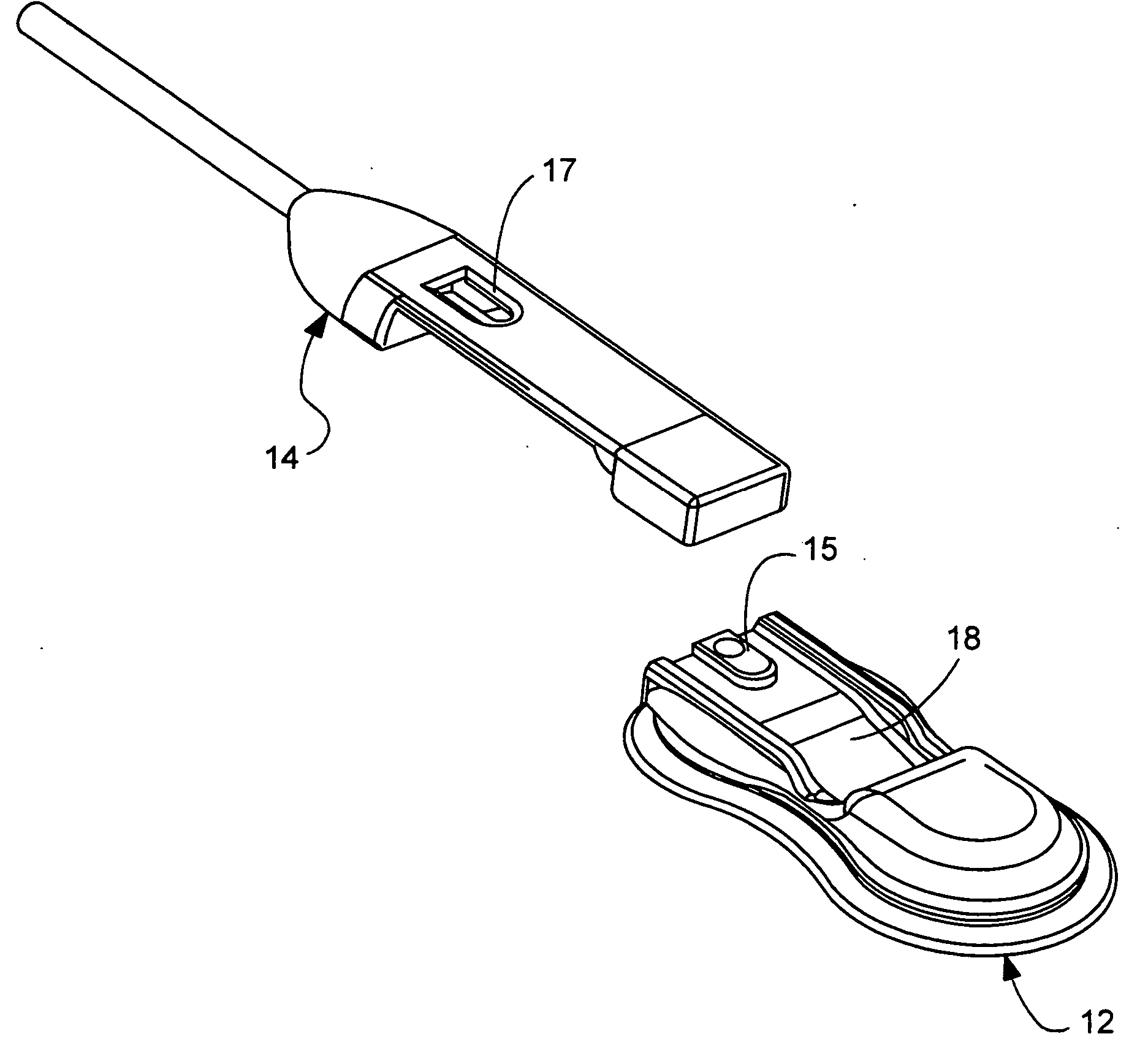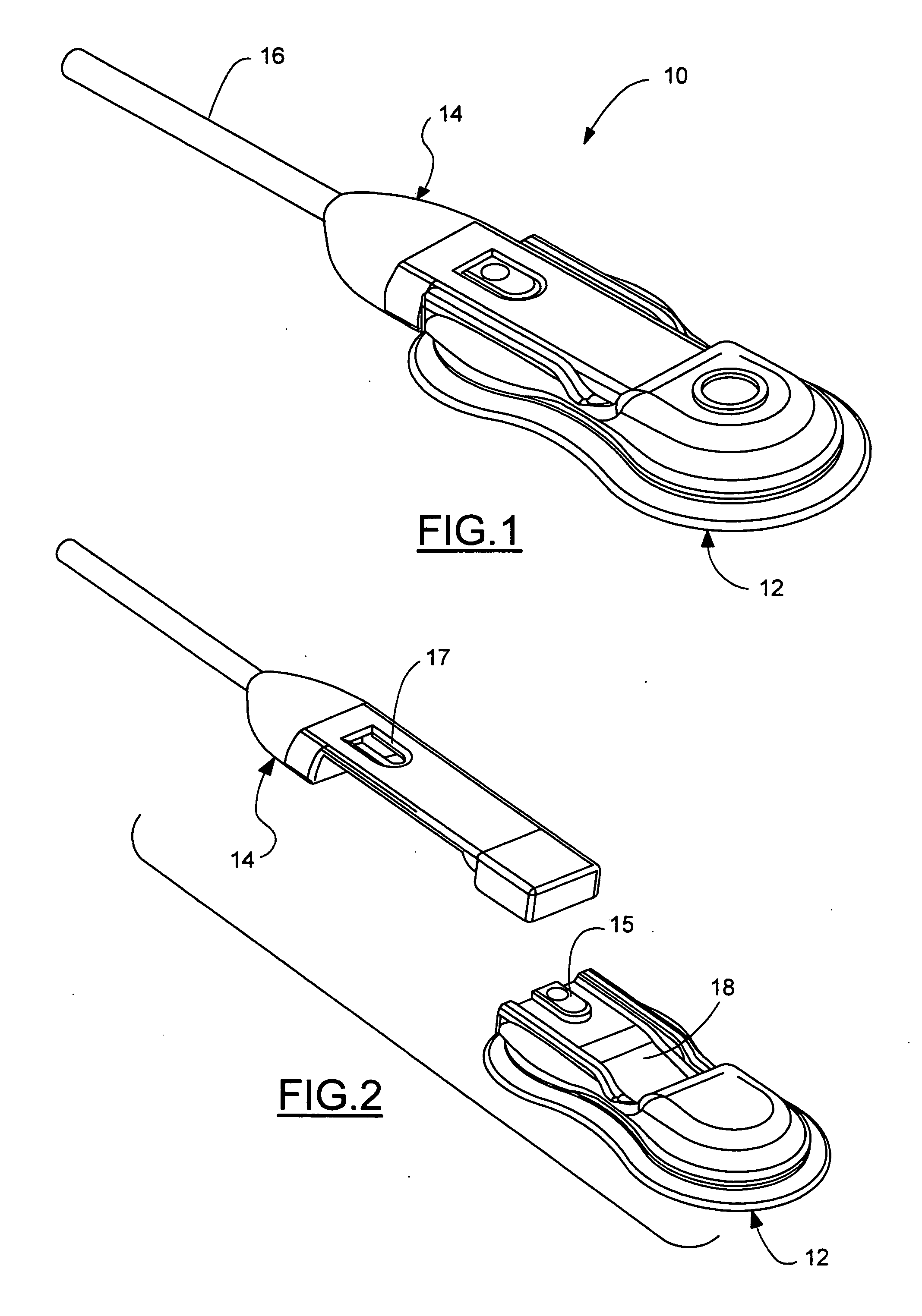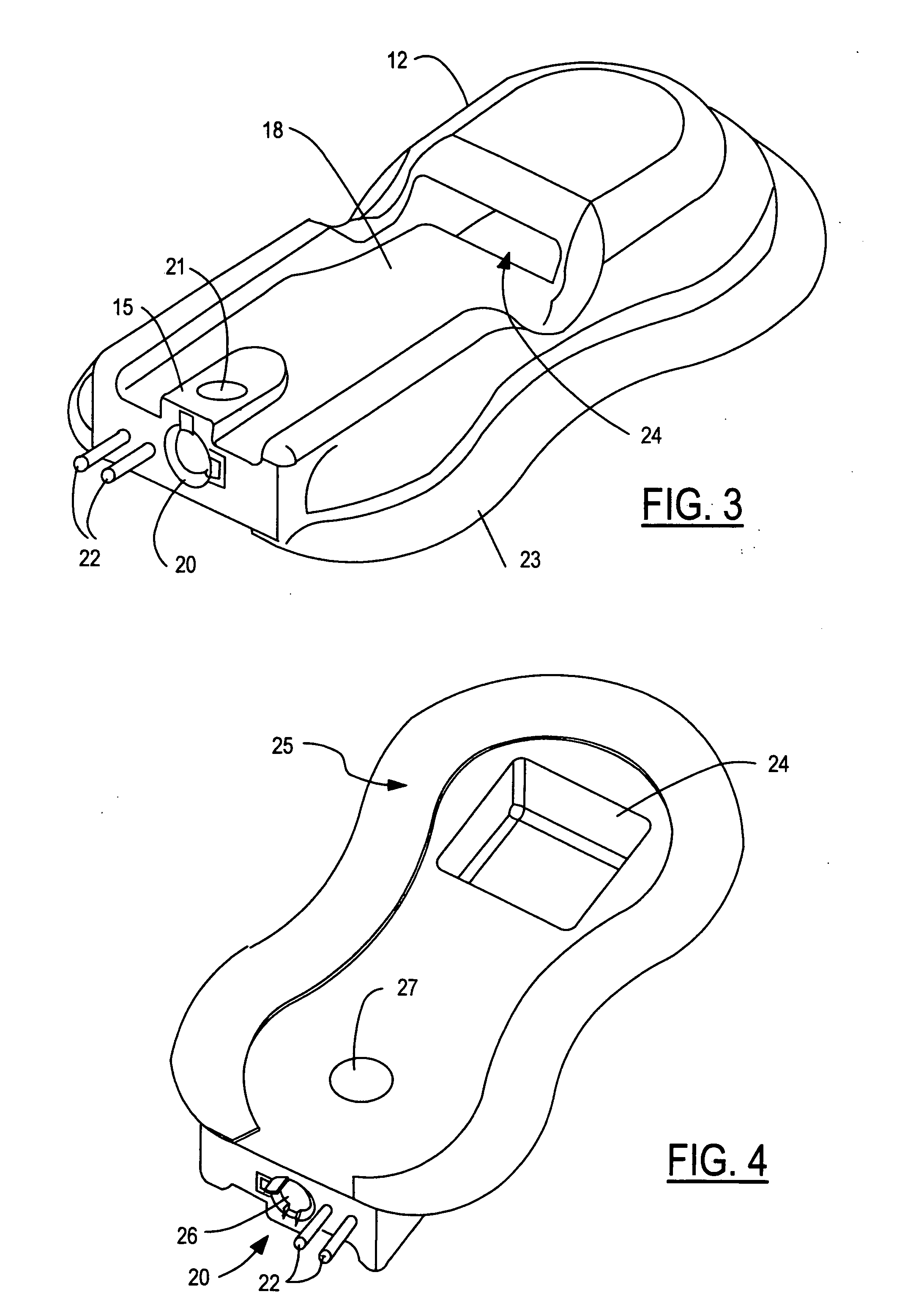Near infrared spectroscopy device with reusable portion
a spectroscopy and sensor device technology, applied in the field of patient oxygenation-related parameters measurement, can solve the problems of insufficient oxygenation, decreased cerebral blood flow, neurologic damage, etc., and achieve the effects of convenient use, small size, and reliable attachment to patients
- Summary
- Abstract
- Description
- Claims
- Application Information
AI Technical Summary
Benefits of technology
Problems solved by technology
Method used
Image
Examples
Embodiment Construction
[0028] Referring now to FIGS. 1 and 2, a NIRS sensor device 10 comprises a disposable coupler portion 12 and a reusable probe portion 14. A hybrid (optical / electrical) cable 16 integrated into reusable portion 14 provides optical and electrical connection to a monitor controller (not shown). Reusable portion 14 can be releasably inserted within a receiving slot 18 of disposable portion 12. Locking features 15 and 17 interlock when the two portions are mated to help keep them together. Feature 15 is part of a soft rubber overmold and is easily compressed within feature 17. Moreover, it can be selectively released when it is desired to unmate the two portions.
[0029] As shown in FIG. 3, a light channel member 20 including an indicator lens 21 and pin members 22 is embedded in an overmold 23 that defines receiving slot 18 and a window 24 that receives the photodetector end of reusable probe portion 14. Lens 21 is centrally located in feature 15 so that it is visible after the mating of...
PUM
 Login to View More
Login to View More Abstract
Description
Claims
Application Information
 Login to View More
Login to View More - R&D
- Intellectual Property
- Life Sciences
- Materials
- Tech Scout
- Unparalleled Data Quality
- Higher Quality Content
- 60% Fewer Hallucinations
Browse by: Latest US Patents, China's latest patents, Technical Efficacy Thesaurus, Application Domain, Technology Topic, Popular Technical Reports.
© 2025 PatSnap. All rights reserved.Legal|Privacy policy|Modern Slavery Act Transparency Statement|Sitemap|About US| Contact US: help@patsnap.com



